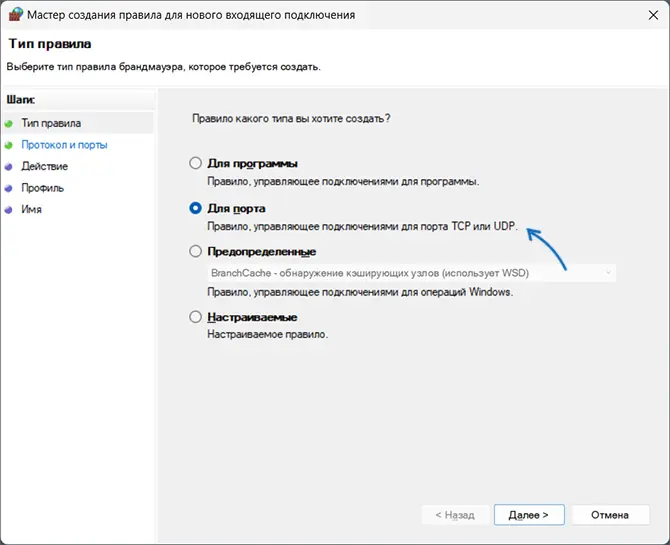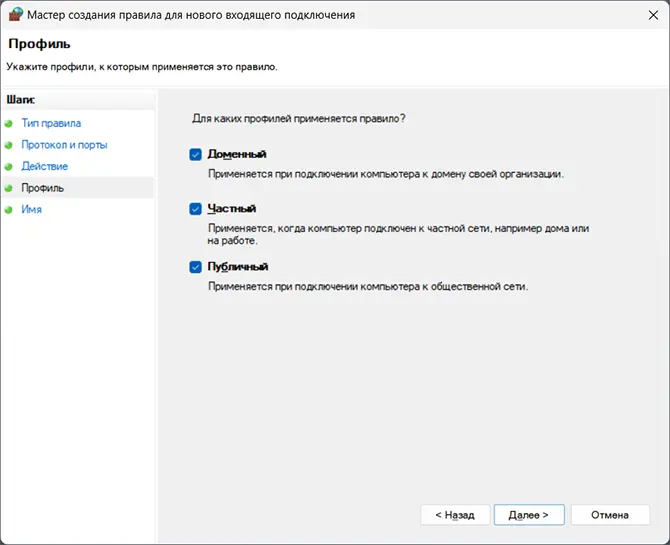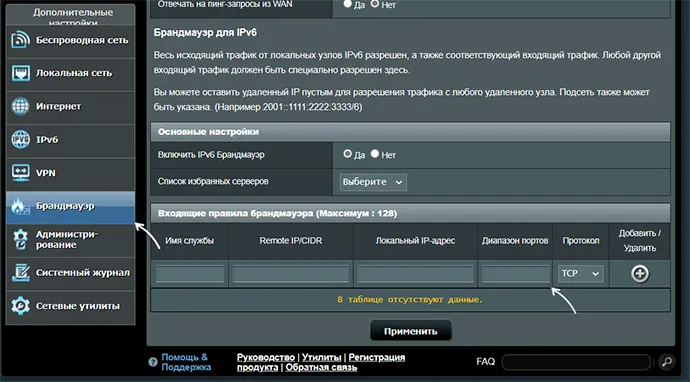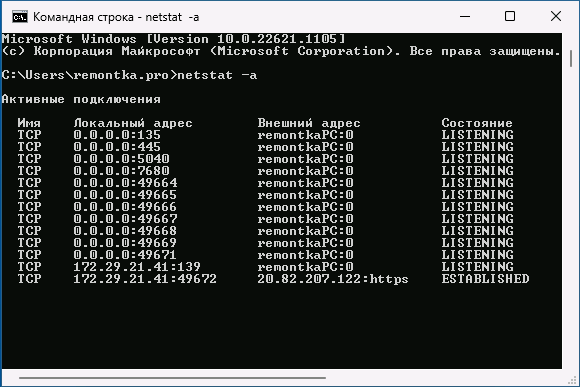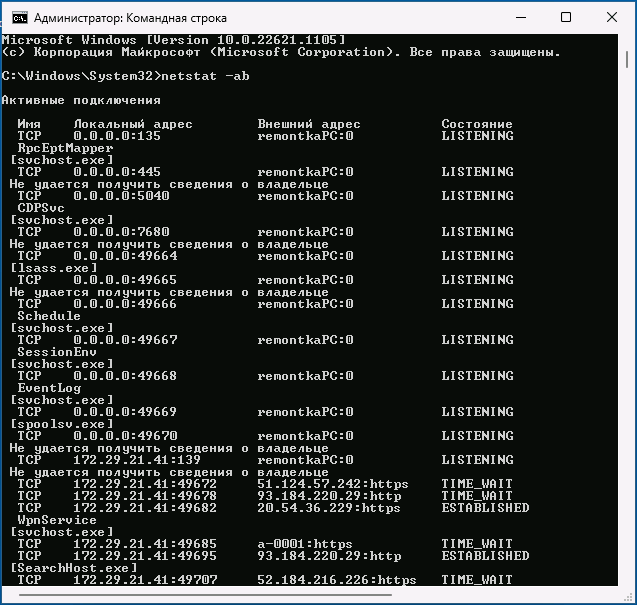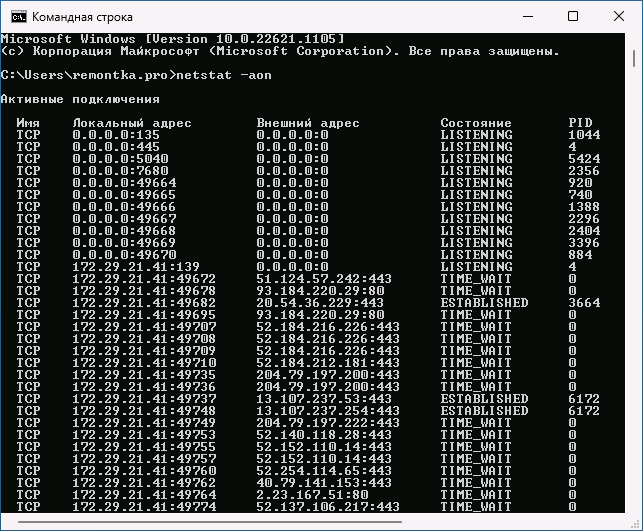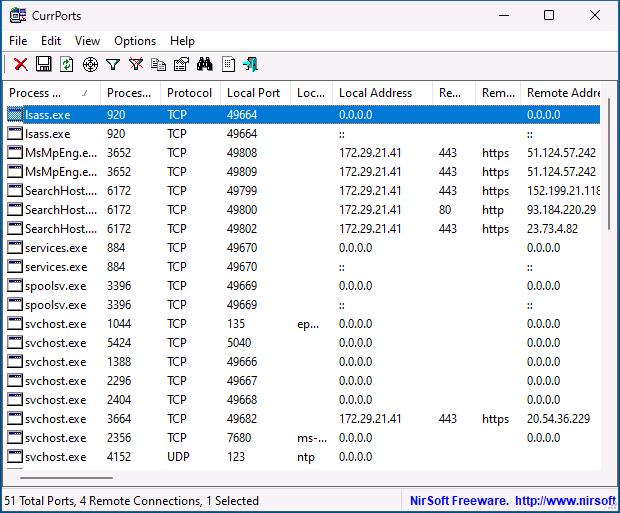- To open a Windows firewall port, open the “Windows Defender Firewall with Advanced Security” console.
- Then click on “Inbound Rules” or “Outbound Rules,” click on “New Rule,” and select the “Port” option.
- Continue selecting the protocol, and the port number to open on Windows 10, allow the connection, choose the network profile to apply the rules, and save the changes.
On Windows 10, the built-in firewall (also known as the “Microsoft Defender Firewall” or “Windows Firewall”) is a powerful feature that protects your computer and data from threats from outside trying to get in and from those inside trying to get out.
A firewall works as a gatekeeper and blocks all unnecessary network ports. Every time an app or service tries to communicate outside your device, it checks if there’s a specific rule in the database to allow or deny network access. You’ll see a prompt to identify and grant or deny permission if it can’t find a rule.
Sometimes well-known applications (for example, SQL Server and QuickBooks) will not work as expected because they’re getting blocked by the Microsoft Defender Firewall. When this happens, you’ll need to manually create a rule to allow them to access the network.
This guide will teach you the steps to open a port to allow an app to communicate outside the network using the built-in firewall on Windows 10.
- Open firewall port on Windows 10
- Close firewall port on Windows 10
Important: Before proceeding, check the app support documentation to know the ports and protocol type you need to open. Also, you can quickly confirm if you need to open a port by temporarily disabling the firewall, and if the app works with the firewall disabled, it indicates you need to create a new rule.
To open one or more ports in the Windows firewall, use these steps:
-
Open Windows Security.
-
Click on Firewall & network protection.
-
Click the Advanced settings option.
-
Select Inbound Rules from the left navigation pane.
-
Under the “Actions” section, click the New Rule option in the right pane.
-
Select the Port option.
-
Click the Next button.
-
Select the appropriate protocol (TCP or UDP) depending on the application. (Usually, the option is TCP.)
-
Type the port number in the “Specific local ports” setting.
Quick note: If the app requires multiple ports open, you can type as many as you need as long as you separate each one with a comma (4500,4600,5000). If you need to specify a port range, you can use a hyphen (-). For example, 3000-3100.
-
Click the Next button.
-
Select the Allow the connection option. (Using the same step, note that you can block the connection.)
-
Click the Next button.
-
Select the network type to apply the rule. (Usually, you want to leave this option with the default selections.)
-
Click the Next button.
-
Type a descriptive name for the rule—for example, My Inbound Rule for QuickBooks.
-
Click the Finish button.
After you complete the steps, inbound connections will be allowed for the app through the port you open in the firewall.
Open outgoing port in Microsoft Defender Firewall
If the app needs a specific outbound port, you can use the same instructions, but instead of selecting Inbound Rules on step 4, you would choose the Outbound Rules options.
To open an outbound firewall port on Windows 10, use these steps:
-
Open Windows Security.
-
Click on Firewall & network protection.
-
Click the Advanced settings option.
-
Click on Outbound Rules in the left navigation pane.
-
Under the “Actions” section, click the New Rule option in the right pane.
-
Select the Port option.
-
Click the Next button.
-
Select the appropriate protocol (TCP or UDP) depending on the application.
-
Type the port number in the “Specific local ports” setting.
-
Click the Next button.
-
Select the “Allow the connection” option.
-
Click the Next button.
-
Select the network type to apply the new rule.
-
Click the Next button.
-
Type a descriptive name for the rule.
-
Click the Finish button.
Once you complete the steps, outbound connections will be allowed for your application through the port you open in the Windows firewall.
Close firewall port on Windows 10
To close the port in the Microsoft Defender Firewall, use these steps:
-
Open Windows Security.
-
Click on Firewall & network protection.
-
Click the Advanced settings option.
-
Click on Inbound Rules or Outbound Rules from the left navigation pane, depending on where you open the firewall port.
-
Select the rule you want.
-
Under the “Actions” section, click the Disable Rule to close the port while keeping the rule. Or click the Delete Rule option to close the port and remove the rule from the firewall.
After you complete the steps, the app or service will no longer have access to the network or internet because the Windows firewall will block it.
Если для какой-то программы или игры требуется подключение через определенный порт, может оказаться что по умолчанию в системе этот порт закрыт и соединение не выполняется. При необходимости порты в Windows 11, Windows 10 и предыдущих версиях системы сравнительно легко открыть.
В этой инструкции подробно о том, как открыть порты в Windows 11 или Windows 10, посмотреть список открытых портов и дополнительная информация, которая может пригодиться, если при подключении всё равно возникают проблемы.
Открытие портов в брандмауэре Windows
Основной способ открытия портов в Windows 11 и 10 — настройка соответствующих правил в брандмауэре.
Прежде всего, откройте настройки Windows в режиме повышенной безопасности. Для этого можно использовать следующие способы:
Следующий шаг — настроить правила для нужных портов:
- Нажмите правой кнопкой мыши по «Правила для входящих подключений» и выберите пункт «Создать правило» в контекстном меню.
- В мастере создания правил выберите пункт «Для порта» и нажмите «Далее».
- Выберите тип протокола — TCP или UDP (если вам не известен нужный тип, уточните в справке по конкретной программе).
- Укажите порты: конкретный порт или их диапазон, можно использовать запятые для перечисления нескольких портов, или знак дефиса для указания их диапазона. Нажмите «Далее».
- Выберите пункт «Разрешить подключение».
- Укажите, для каких типов сетей (сетевых профилей) следует открыть порты.
- Укажите имя правила и, при желании, его описание. Затем нажмите кнопку «Готово».
- Выполните действия 1-7, но уже для исходящего подключения.
Готово, порт открыт и, если что-то ещё не мешает его работе, соединения должны будут устанавливаться.
Возможные проблемы и дополнительные необходимые действия
Если вы открыли требуемые порты в Windows, но несмотря на это соединение не устанавливается, следует учитывать, проверить или выполнить следующие действия:
- VPN может влиять не возможность обмена данными по определенным портам. Решение: отключить VPN, либо посмотреть, есть ли возможность открыть порты в ПО для VPN.
- Роутеры имеют собственные функции файрволла/брандмауэра и порты может потребоваться открыть (пробросить) и в настройках роутера. В зависимости от марки и модели Wi-Fi роутера, это выполняется в разных разделах: перенаправление портов (port forwarding), брандмауэр (firewall), межсетевой экран, виртуальные серверы. Логика настройки везде одна и та же: добавляются обычно совпадающие внешний порт и внутренний порт (нужный вам порт), указывается внутренний IP (локальный IP компьютера, к которому нужно пробросить порт), тип протокола — TCP или UDP, иногда требуется указать интерфейс, для соединений из «внешней сети» — WAN.
- Если само приложение заблокировано в брандмауэре, оно не сможет устанавливать соединения: можно добавить правила, разрешающие подключения для программы тем же способом, которым это выполнялось выше для портов.
- Наличие сторонних файрволлов и антивирусов с функциями защиты сети также может влиять на возможность установки соединений по определенным портам: следует проверить их настройки, при наличии такого ПО, чтобы открыть соответствующие порты или отключить защиту для них.
Как посмотреть открытые порты в Windows и какие программы их используют
В Windows постоянно открыты многие порты, требующиеся как для работы системных служб, программ (в том числе сторонних), браузеров. Вы можете посмотреть список открытых портов одним из следующих способов:
- Запустить командную строку и ввести команду (порты указаны после двоеточия в IP-адресе)
netstat -a
- Если требуется посмотреть, какие процессы используют определенные порты, используйте команду (требует запуска от имени администратора)
netstat -ab
- Для просмотра открытых портов с ИД (PID) процесса (по которому в диспетчере задач можно увидеть конкретный процесс):
netstat -aon
- Есть сторонние программы, позволяющие получить сведения об открытых портах и использующих их процессах, например, бесплатная NirSoft CurrPorts.
Список «стандартных» и наиболее часто используемых портов доступен в Википедии, но многие игры и программы могут использовать свои собственные, не указанные в списке порты для работы.
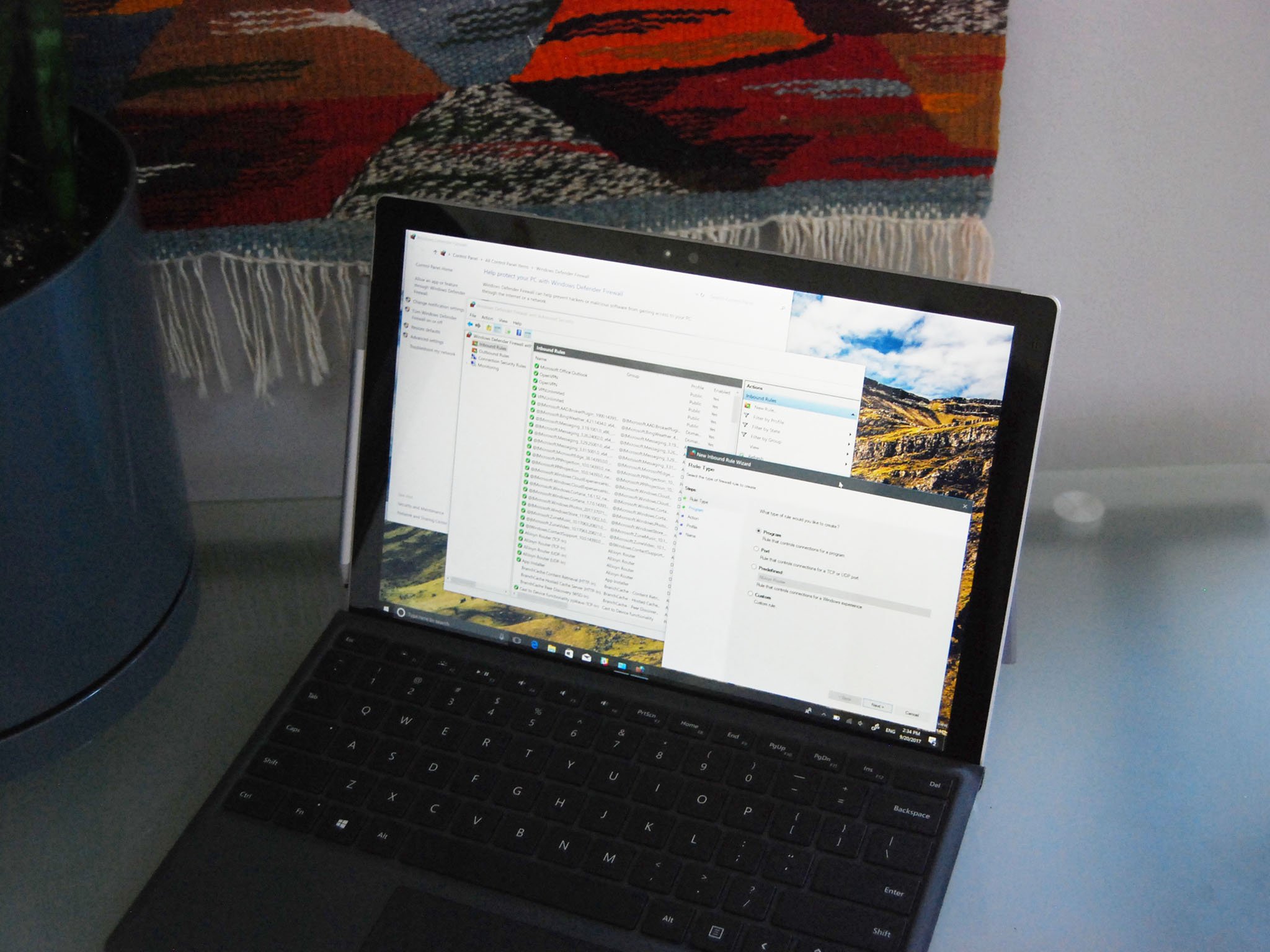
When dealing with certain apps and processes on your Windows 10 PC, you might run issues if you aren’t connecting properly to the internet. If you’ve come across a potential fix that involves opening a certain port in your firewall, you might be wondering what exactly that process entails. This is a problem that can arise in plenty of situations, but especially when attempting to set up a VPN. If you suspect Windows Firewall is part of your connectivity issue, here’s how to open ports.
How to open a port for incoming traffic in Windows Firewall
Windows Firewall is designed as a security measure for your PC. To put it simply, a firewall analyzes incoming and outgoing connections to determine whether or not they’re threats. If you suspect that your Windows Firewall is causing connectivity issues, you can open a port for incoming traffic. Here’s how:
- Right-click the Start button.
- Click Search.
- Type Windows Firewall.
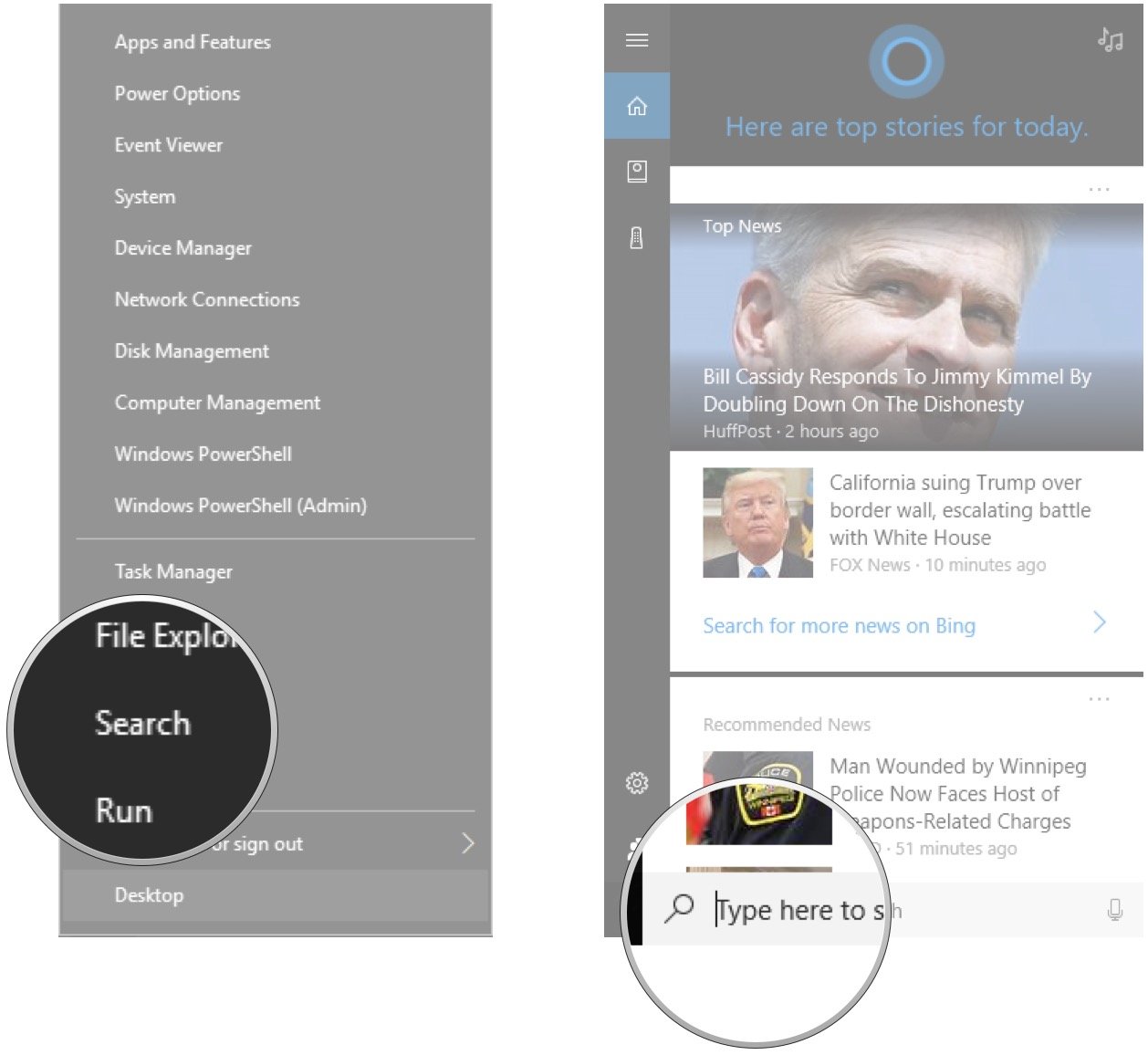
- Click Windows Firewall.
- Click Advanced settings.
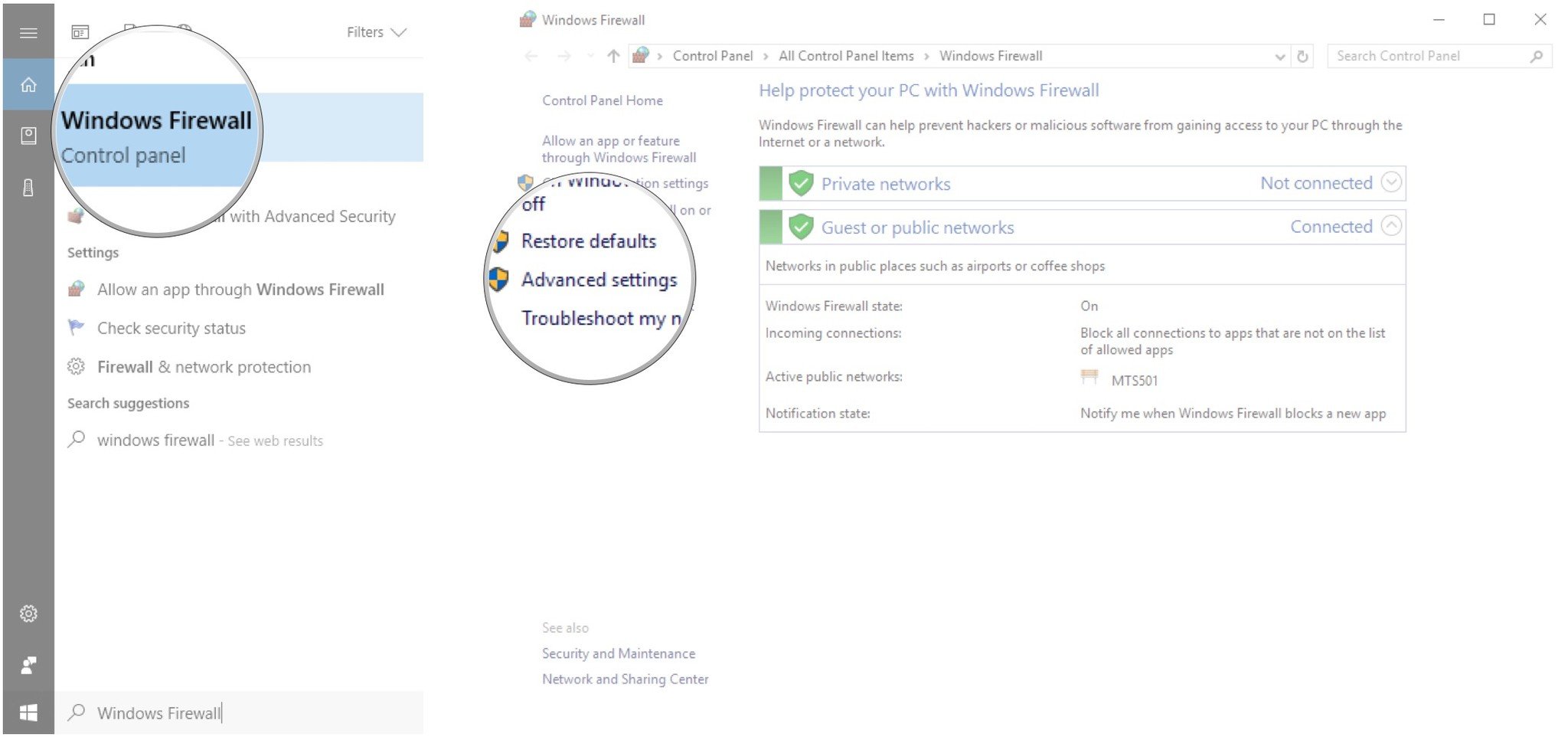
- Click Inbound Rules in the left frame of the window.
- Click New Rule… in the right frame of the window.

- Click Port.
- Click Next.
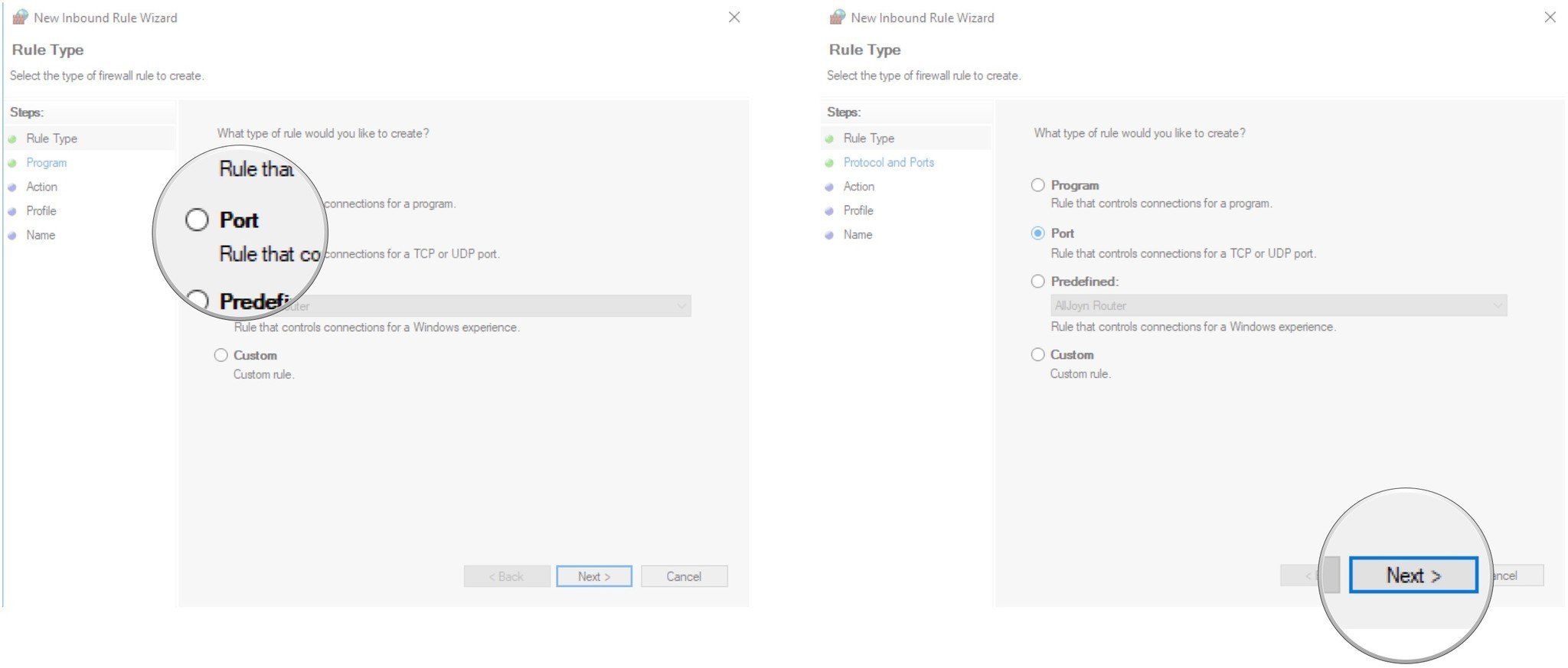
- Click either TCP or UDP.
- Click Specific local ports.
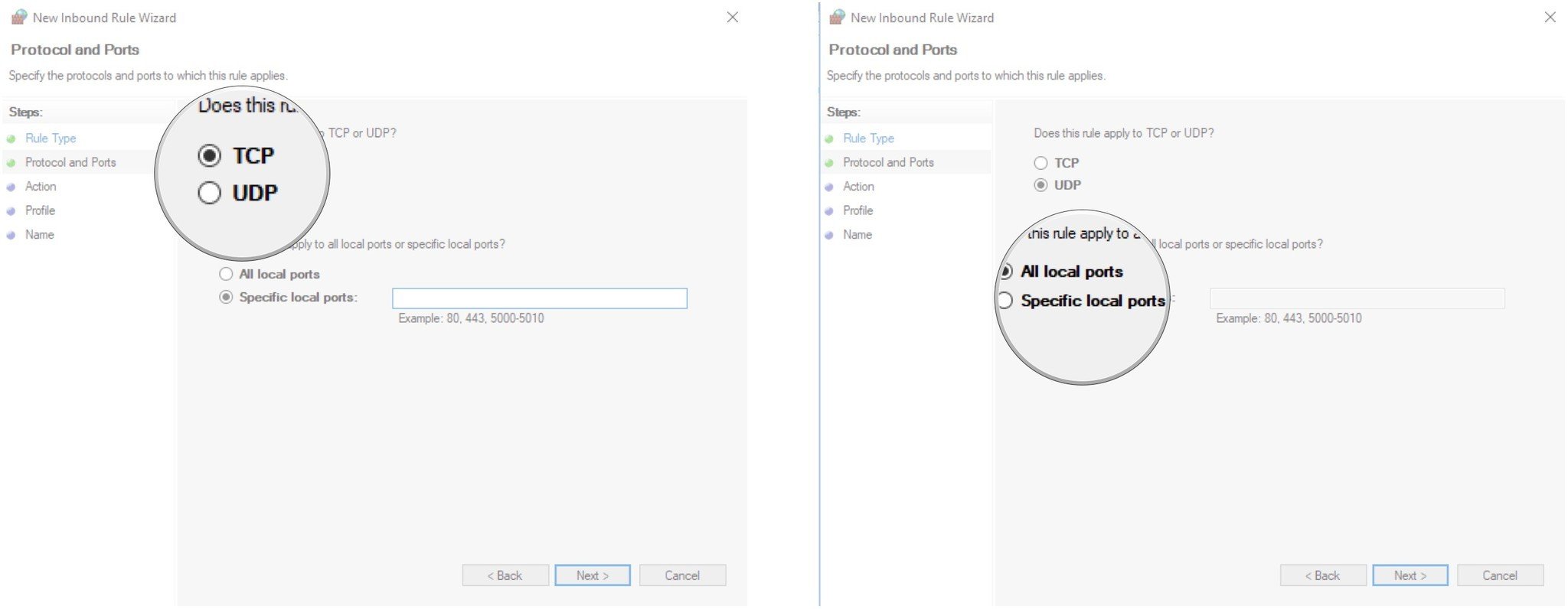
- Type a port number. (In this case, we will open port 1707.)
- Click Next.
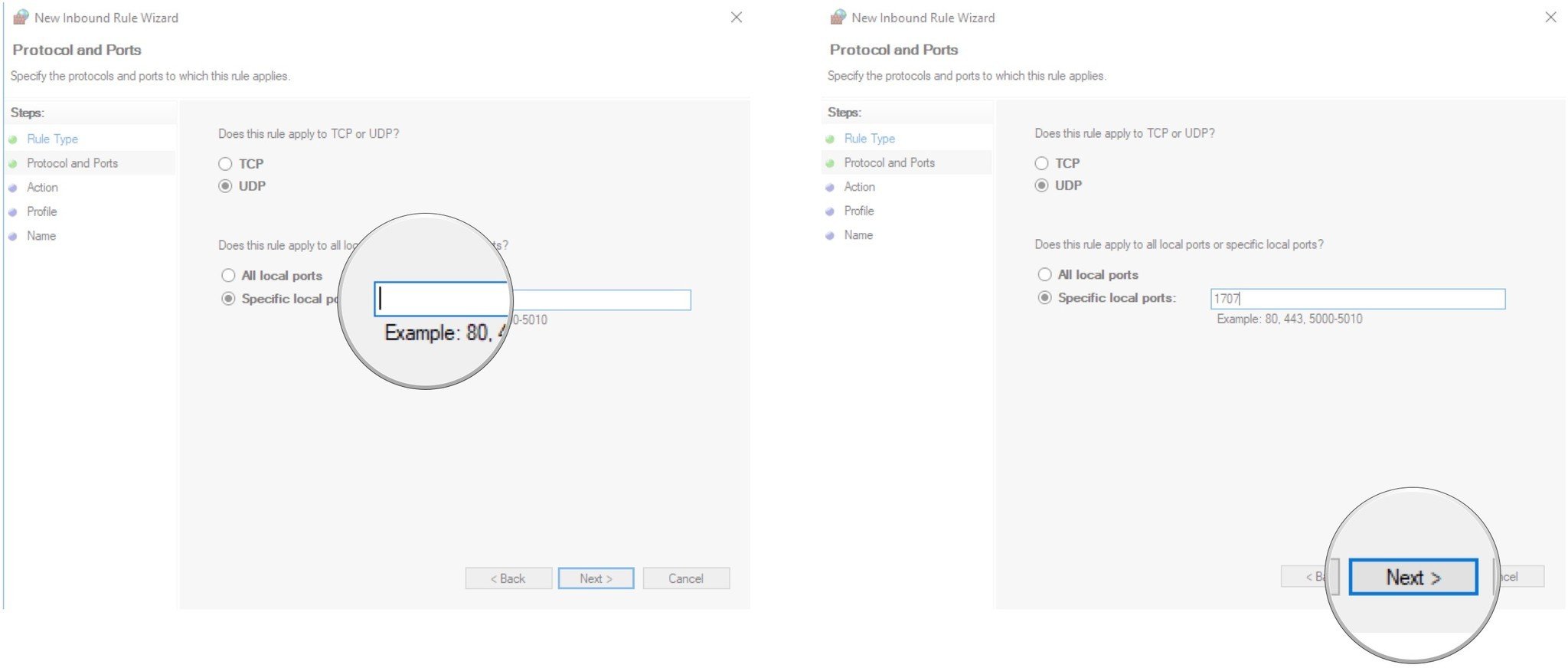
- Click Allow the connection.
- Click Next.

- Click any network types you’d like to allow the connection over.
- Click Next.

- Type a name for the rule.
- Click Finish.
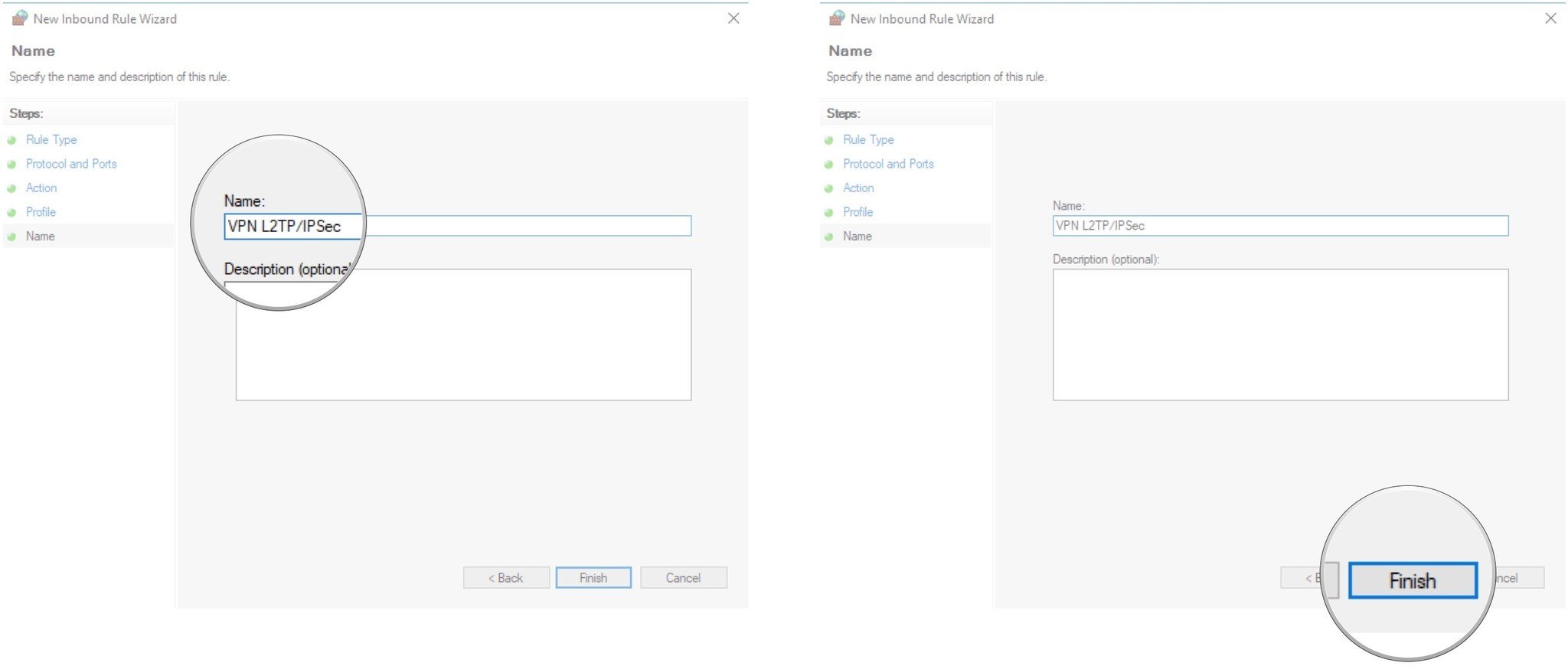
How to open a port for outgoing traffic in Windows Firewall
The same set of steps listed above can be used to create a rule for outgoing traffic. In step No. 6, instead of clicking Inbound Rules, you’ll want to click Outgoing Rules. The rest of the steps are the same, and you can disable the rule in the same manner by using the steps in the next section.
How to close a port in Windows Firewall
Want to disable the rule you created to open a port in the Windows Firewall? Here’s how:
- Right-click the Start button.
- Click Search.
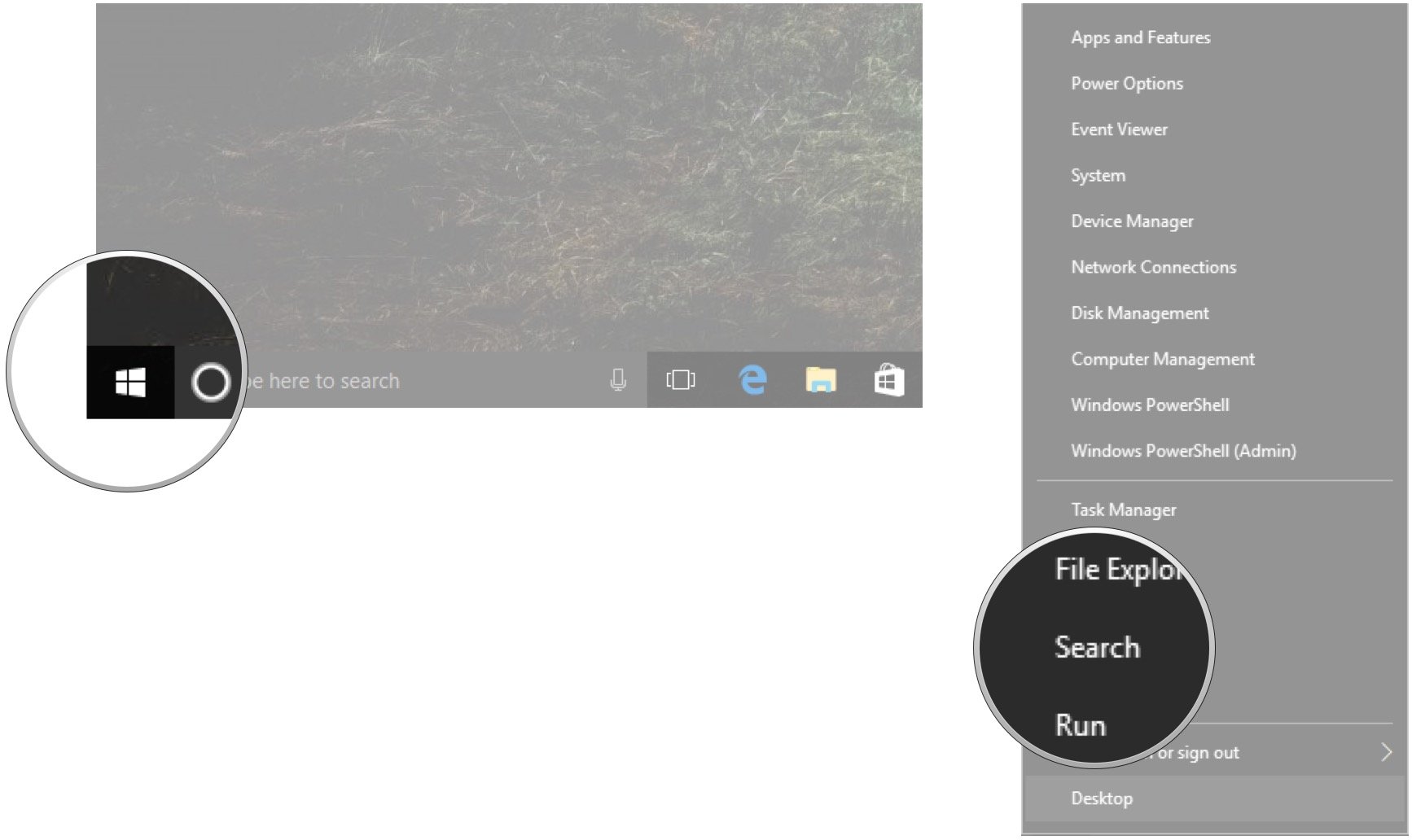
- Type Windows Firewall.
- Click Windows Firewall.
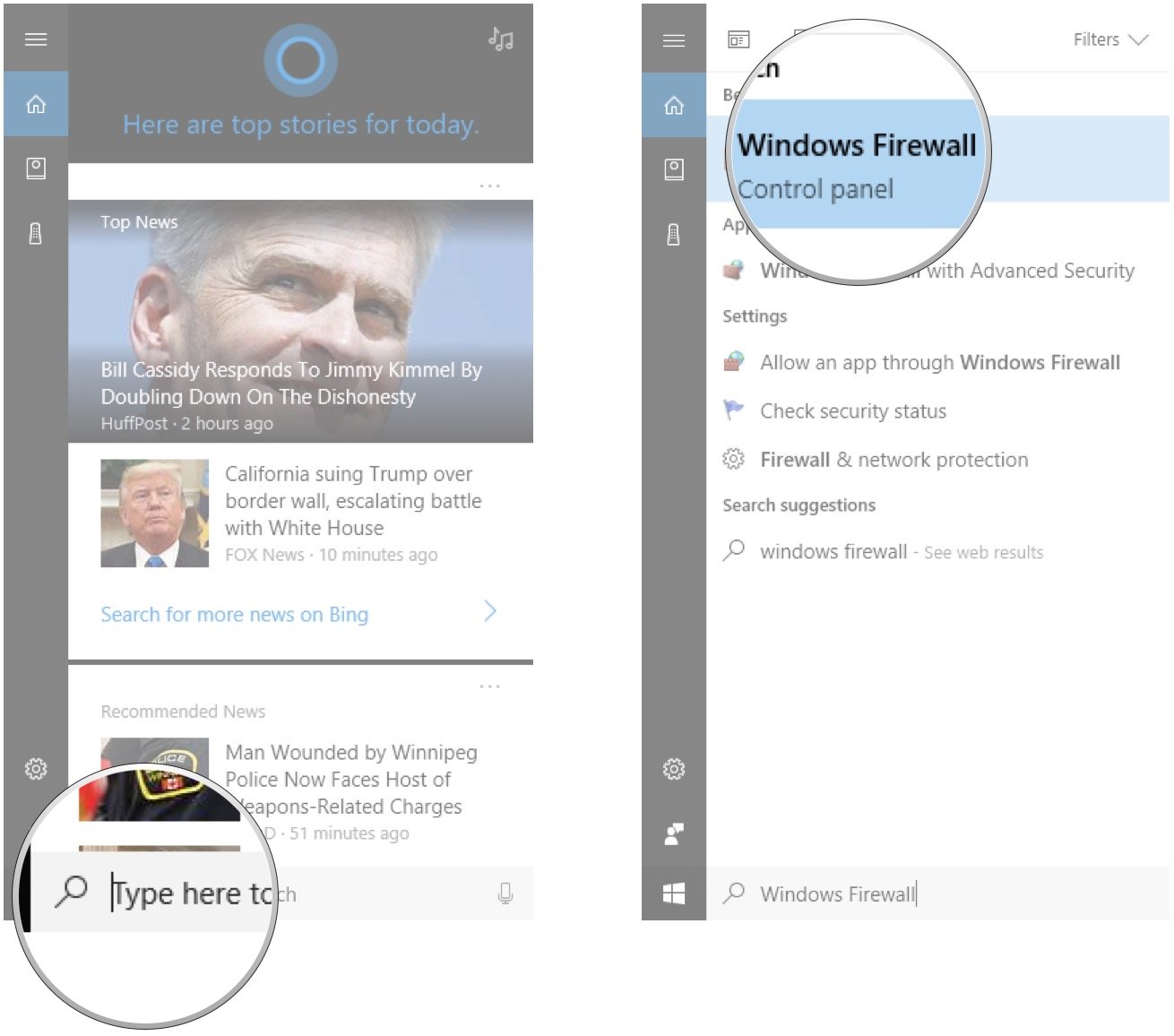
- Click Advanced settings.
- Click Inbound Rules or Outbound Rules in the left frame of the window, depending on what type of rule you created.

- Click the rule you created.
- Click the name of the rule in the right frame of the window.

- Click Disable Rule.
- Click Delete if you want to completely delete the rule.

More resources
Need a bit more help with Windows Firewall and Windows 10? We have plenty of resources covering a wide range of topics.
- How to troubleshoot and fix Windows Firewall problems
- What you need to know about the new Windows Defender Security Center in the Creators Update
- Windows 10 help, tips, and tricks
All the latest news, reviews, and guides for Windows and Xbox diehards.
Cale Hunt brings to Windows Central more than eight years of experience writing about laptops, PCs, accessories, games, and beyond. If it runs Windows or in some way complements the hardware, there’s a good chance he knows about it, has written about it, or is already busy testing it.
Download Article
Configure your router or computer to accept incoming connections
Download Article
- Windows Firewall
- Windows Command Prompt
- macOS
- Router Ports
- Linux
- Check If Ports Are Open
- FAQ
- Video
- Q&A
- Tips
- Warnings
|
|
|
|
|
|
|
|
|
|
Do you need to allow an application or service through your PC or Mac’s firewall? If you’re running a server, streaming, gaming, or using an app that requires a port to be open, we can help. Many ports are closed by default to prevent intrusion, but it’s easy to open them. This wikiHow article will teach you how to open a port on Windows 10, Windows 11, Mac,, Linux, and even on your router. We’ll also show you how to find out if ports are open and share helpful security tips from computer and tech specialist Luigi Oppido.
Quick Steps: Open a Port on Windows
- Open Windows Defender Firewall with Advanced Security.
- Go to Inbound Rules > New Rule.
- Select Port.
- Select TCP or UDP and enter the port or range.
- Select «Allow the connection.»
- Name the firewall rule and click Finish.
-
To access your firewall settings on Windows 10 or 11, follow these quick steps:
- Press the Windows key on your keyboard or click the magnifying glass in your taskbar.
- Type windows firewall.
- Click Windows Defender Firewall with Advanced Security.
- If prompted, enter your password to confirm.
-
It’s in the upper-left side of the window.[1]
Advertisement
-
You’ll see this option on the right side of the window.[2]
-
This will allow you to manually choose the ports you want to open.
- If you are being told to open a port to use a specific application or play a certain game, Oppido recommends looking it up first. «If I’m being asked to open up a port, I do a quick Google search to see if that port is being used by any other services or protocols,» he says. If the port number is commonly used for a certain program, make sure that program isn’t something hackers are scanning for, as this could leave your system vulnerable.
-
Check the TCP box or the UDP box.
- Check your program’s support documentation to ensure that you are using the correct protocol.
- In most cases, if you’re opening a port to run specific software, you’re opening a TCP port.
-
Make sure the «Specific local ports» option is selected, and then type the ports you need to open into the field. You can open multiple individual ports by separating them with a comma, and you can denote a range of ports by using a dash between the two ends of the range.
- For example, you would type 8830 to open port 8830, 8830, 8824 to open both port 8830 and port 8824, or 8830-8835 to open ports 8830 through 8835.
- If you are supposed to choose a random port, Oppido recommends selecting a port in the thousands because a lot of three-digit port numbers are used by other apps and services.
-
It’s at the bottom of the window.
-
If this option isn’t checked, click the checkbox before continuing.[3]
- You can also use this tool to block connections.
-
These include the «Domain», «Private», and «Public» boxes.
-
It’s at the bottom of the window.
-
This will save your settings and open your port(s).
- If opening the ports required by your software or server doesn’t resolve your problem, you may also need to set up port forwarding on your router.
Advertisement
-
1
Open Command Prompt as an administrator. If you want to use the command prompt to open ports on Windows, you’ll want an administrator CMD window.[4]
To open one:- Press the Windows key and type cmd.
- Right-click Command Prompt and select Run as Administrator.
- Click Yes to continue.
-
2
Open a port. To open ports in command prompt, you’ll use the netsh advfirewall command. You will need to know the port number you are supposed to open and the protocol (TCP or UDP). In this example, we will open port 25565, a port commonly associated with Minecraft:[5]
- netsh advfirewall firewall add rule name= "Open port 25565" dir=in action=allow protocol=TCP localport=8025565
- «Open port 25565» is the name we gave to the firewall rule–you can call this anything you want.
- You can learn about more port-opening options by running the command netsh advfirewall firewall add rule ?
- Want to see which ports are open? Jump down to How to Check if Ports are Open.
Advertisement
-
1
Open your Mac’s firewall settings. If you want to allow a specific app through your firewall, you can do so in your firewall settings. Unlike in Windows, you won’t need to open specific port numbers on your Mac—the firewall manages ports on a per-application basis. Follow these steps to open your firewall settings:[6]
-
macOS Ventura or later: Click the Apple menu, select System Settings, click Network, and then click Firewall.[7]
- macOS Monterey and earlier: Click the Apple menu, select System Preferences…, Click Security & Privacy, and then click the Firewall tab.
-
macOS Ventura or later: Click the Apple menu, select System Settings, click Network, and then click Firewall.[7]
-
2
Click Options…. This will be called «Firewall Options» on older versions of macOS. A list of firewall rules will appear.
- If the options button is turned off, the firewall is disabled. Enable it now to continue.[8]
- If the options button is turned off, the firewall is disabled. Enable it now to continue.[8]
-
3
Click +. You’ll see this option below the list of firewall rules.[9]
-
Simply click an application to select it.
- If the app you are looking for doesn’t appear on the list, it may already have access through the firewall. This is true for many system services, as well as some digitally signed apps.[10]
- If the app you are looking for doesn’t appear on the list, it may already have access through the firewall. This is true for many system services, as well as some digitally signed apps.[10]
-
5
Click Open. It’s near the bottom of the window. Doing so will add the program to the list.
-
6
Make sure «Allow incoming connections» is displayed next to the app’s name. If you don’t see this to the right of the application’s name, click the dropdown menu to the right of the application’s name and select Allow incoming connections.
-
7
Click OK to save your changes. The application is now allowed through the firewall.
- If opening the ports required by your software or server doesn’t resolve your problem, you may need to also set up port forwarding on your router.
Advertisement
-
You’ll need your router’s IP address to access your router’s configuration page.
-
Windows: Press the Windows key on your keyboard, type cmd, and click Command Prompt. At the prompt, type ipconfig and press Enter. The IP address of your router appears next to «Default gateway.»[11]
-
Mac: Open the Launchpad, type terminal, and click Terminal.[12]
Then, type or paste netstat -nr and press Return to find the IP next to «Default.»
-
Windows: Press the Windows key on your keyboard, type cmd, and click Command Prompt. At the prompt, type ipconfig and press Enter. The IP address of your router appears next to «Default gateway.»[11]
-
Open your preferred web browser, then type or paste your router’s IP address into the address bar. Press Enter or Return to bring up the login page.
-
If you’ve already configured the router, enter the username and password you chose then. If not, consult your router’s manual or online page for the stock username and/or password.
- If you’ve forgotten your login information, you may have to reset the router.
-
Since each router’s page will differ slightly from others, look for the following options (or variations of them):
- Port Forwarding
- Applications
- Gaming
- Virtual Servers
- Firewall
- Protected Setup
- You may also want to look for an Advanced Settings section.
-
Each router will have a slightly different way of doing this, although the required information is the same for any router:
- Name or Description — Enter the application’s name.
- Type or Service Type — This can be TCP, UDP, or both. If you aren’t sure of which one to select, click Both or TCP/UDP.
- Inbound or Start — Type in the port number here. If you are opening a range of ports, type in the lowest number in the range instead.
- Private or End — Re-type in the port number here. If you are opening a range of ports, type in the highest number in the range instead.
EXPERT TIP
Luigi Oppido is the Owner and Operator of Pleasure Point Computers in Santa Cruz, California. Luigi has over 25 years of experience in general computer repair, data recovery, virus removal, and upgrades. He is also the host of the Computer Man Show! broadcasted on KSQD covering central California for over two years.
Don’t open ports unless you know what you are doing. If you are opening ports, you’re opening more doorways into your network. Use unique ports that people aren’t using, maybe in the thousands or so, because a lot of people use three-digit ports.
-
This goes in the «Private IP» or «Device IP» field. You can find your private IP address on a PC or on a Mac.
-
Click the Save or Apply button. If prompted, you’ll also need to restart your router for the changes to take effect.
- You may also have to check an «Enabled» or «On» box next to the forwarded port row.
Advertisement
-
1
Make sure the port you want to open is not in use. You can do this using the netstat command at the command line. In this example, we’ll check to see if port 3331 is open:
- netstat -na | grep :3331
- If you get a «Command not found» when using netstat, replace «netstat» with «ss» like this: ss -na | grep :3331
- If the port is not currently in use, you will not get any sort of message because the port number was not found in the firewall rules. If the port is in use, you will see its associated rule.
-
2
Open the port in UFW (Uncomplicated Firewall). If you are using Debian, Ubuntu, or another Debian-based distribution running UFW, you would use this command to open port 3331:[13]
- sudo ufw allow 3331
-
3
Open the port in firewalld. If you are using firewalld, the default firewall for Fedora, CentOS, Red Hat, and other RH-based distros, you would use this command to open port 3331:[14]
- firewall-cmd --add-port=4000/tcp
Advertisement
-
To see if your ports are open to people outside of your network, try a web-based port checker. These port-checking websites are great for making sure certain ports, such as your Minecraft server or Soulseek port, are open. Just visit any of these sites and enter your IP address and the port you want to check.
- [15]
- [16]
- [17]
- [15]
-
If you want to see a quick list of all open ports on your Windows PC, you can run a simple command at the command prompt. Here’s how:
- Press the Windows key on your keyboard and type cmd.
- Right-click Command Prompt and choose Run as administrator.
- Click Yes to proceed.
- Type netstat -ab and press Enter.
- All open TCP and UDP ports will appear, along with the name of the app using that port.[18]
-
You can see a list of all open ports in your Mac’s Terminal app. Here’s how:
- Open Terminal by clicking the Terminal icon on the Launchpad.[19]
- Type lsof -i -P and press Return to see all open (listening) ports. It may take a moment for the list to populate.
- Open Terminal by clicking the Terminal icon on the Launchpad.[19]
-
4
See all open ports on Linux. To see which ports are in use on your Linux system, open a Terminal and run the command sudo ss -tunl.
- You can also use the command sudo lsof -nP -iTCP -sTCP:LISTEN to see a list of TCP listening ports.
Advertisement
-
1
What does open ports mean? An open port is a network entry point that can accept connections. For example, when you load a website that begins with «https://», the SSL port (port 443) is open, which allows you to access the website.
-
2
Why do hackers scan for open ports? Hackers use port-scanning tools to scan for exploitable software/vulnerabilities in remote computers. For example, a hacker can enter an IP address, scan it for all open ports, and then use various tools to try exploiting the software running on those ports.[20]
-
3
Why are ports 80 and 443 open? If these ports are open on your server, it’s usually because there’s a web server running (or installed and not yet running). Port 80 (and sometimes port 8080) is the standard unencrypted HTTP port, while 443 is the encrypted HTTPS port.[21]
In most cases, port 80 forwards to port 443 so that people attempting to load the unsecured version of the website will be served the SSL version.[22]
-
4
What happens when you open a port? You’re allowing inbound connections through your firewall. Essentially, you’re opening a door to computers outside of your network to connect to the software that runs on that port.
Advertisement
Add New Question
-
Question
Will this put my device or router in danger of hacking or viruses?
Yes, opening the wrong port may compromise your computer’s security and render it vulnerable to viruses and other malicious activity, like hacking.
-
Question
How can a hacker open a port?
By using ipconfig command at the command prompt or using Windows log key and type run and then cmd.
-
Question
How do I tell if a port is open on my router?
Go to command prompt and enable telnet services, syntax, telnet (ipadress) (port number).
See more answers
Ask a Question
200 characters left
Include your email address to get a message when this question is answered.
Submit
Advertisement
Video
-
Most applications use TCP ports. Time-sensitive programs, like multiplayer video games and live streaming apps, may use both UDP and TCP ports.
Thanks for submitting a tip for review!
Advertisement
-
Be careful when opening ports. Opening the wrong port may compromise your computer’s security and make it vulnerable to viruses and other malicious activity like hacking.
Advertisement
About This Article
Article SummaryX
1. Sign in to your router’s admin site.
2. Go to the Firewall page.
3. Locate the Port Forwarding section.
4. Enter or select the port.
5. Enter your computer’s private IP address.
6. Click Save or Apply.
7. Restart the router.
Did this summary help you?
Thanks to all authors for creating a page that has been read 1,288,414 times.
Is this article up to date?

Knowing how to open ports in your Windows firewall is sometimes necessary for applications, games, or services to function correctly. This guide offers a detailed walkthrough for both Windows 10 and Windows 11 to open a port safely. It includes different scenarios, important security tips, and troubleshooting advice.
Warning: Opening ports can create security vulnerabilities if not done carefully. Only open ports are needed, and you must always follow security best practices.
Steps to Open Port in Windows
Opening the port through the Windows Defender Firewall is easy. Here’s how to open ports in Windows:
- Type “Windows Defender Firewall” into the Windows search bar and open the application.
- Click on “Advanced settings” on the left-hand menu. This will open the “Windows Firewall with Advanced Security” console

- Decide whether you need to open the port for incoming (Inbound) or outgoing (Outbound) connections. For applications receiving connections, choose Inbound.

- In the right-hand pane, click “New Rule…”
- Select “Port” and click “Next.”
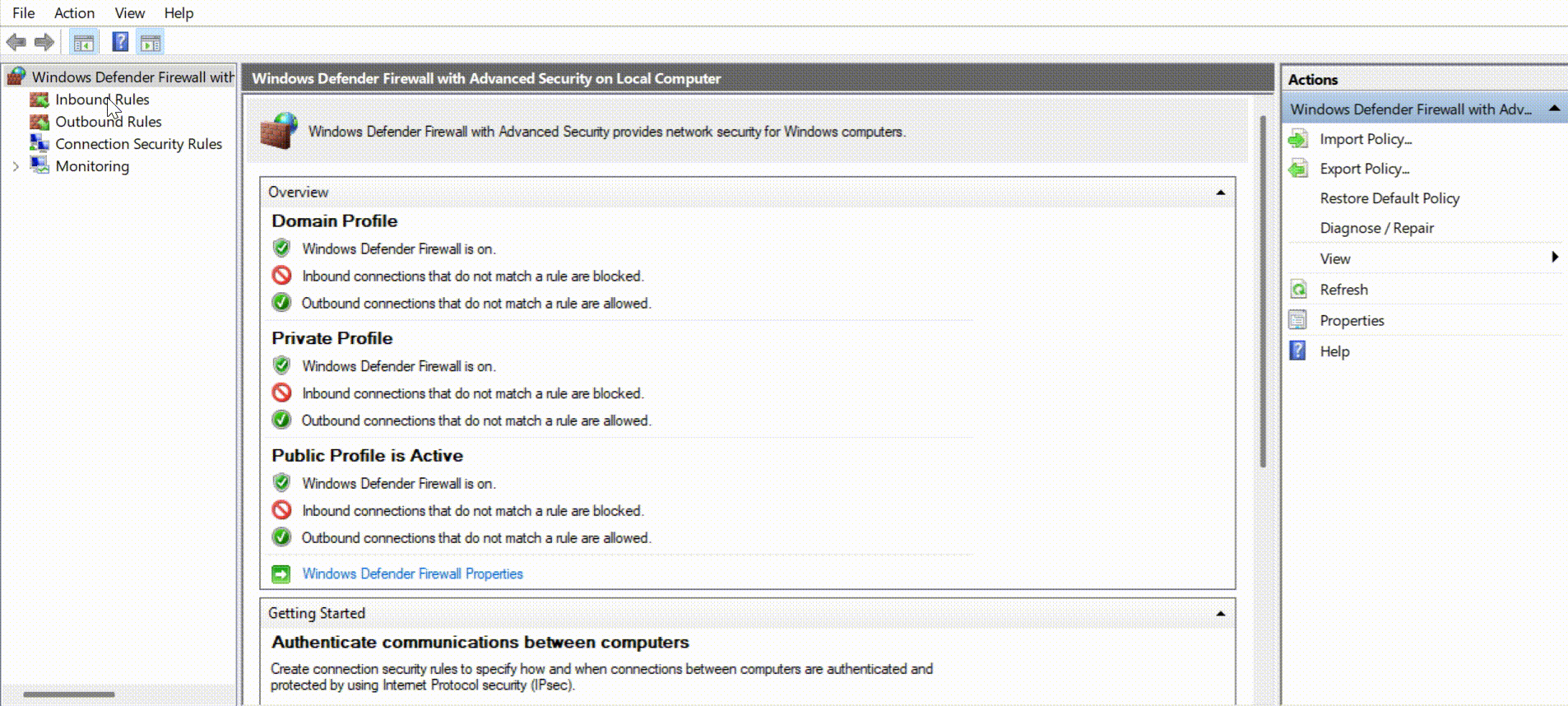
- Choose either TCP or UDP, depending on the application’s requirements. If you’re unsure, check the application’s documentation. Enter the specific port number. Click “Next.”
- Select “Allow the connection.” Click “Next.”
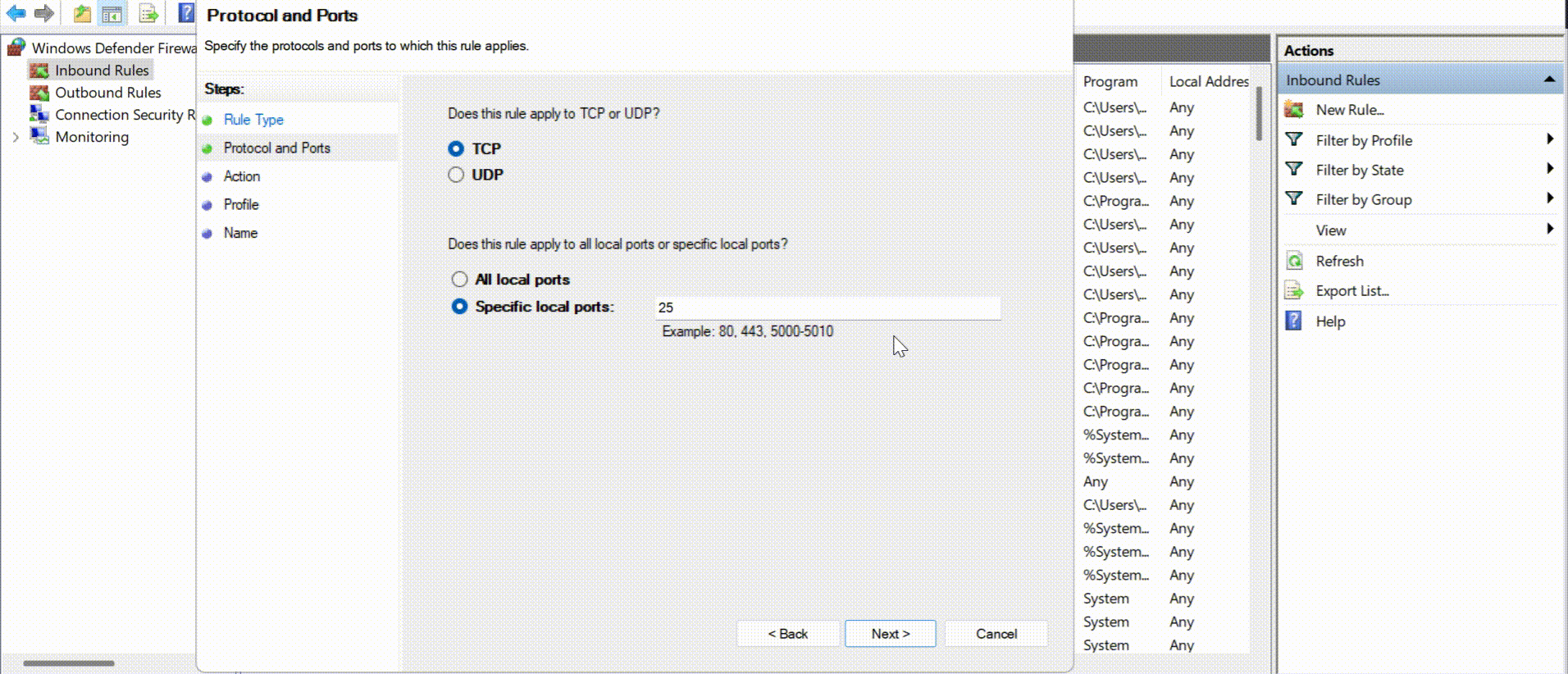
- Choose the profiles (Domain, Private, Public) where you want the rule to apply. For home use, Private is usually sufficient. Click “Next.”
- Give the rule a descriptive name (e.g., “FTP Port”). This helps you manage your rules later. Click “Finish.”
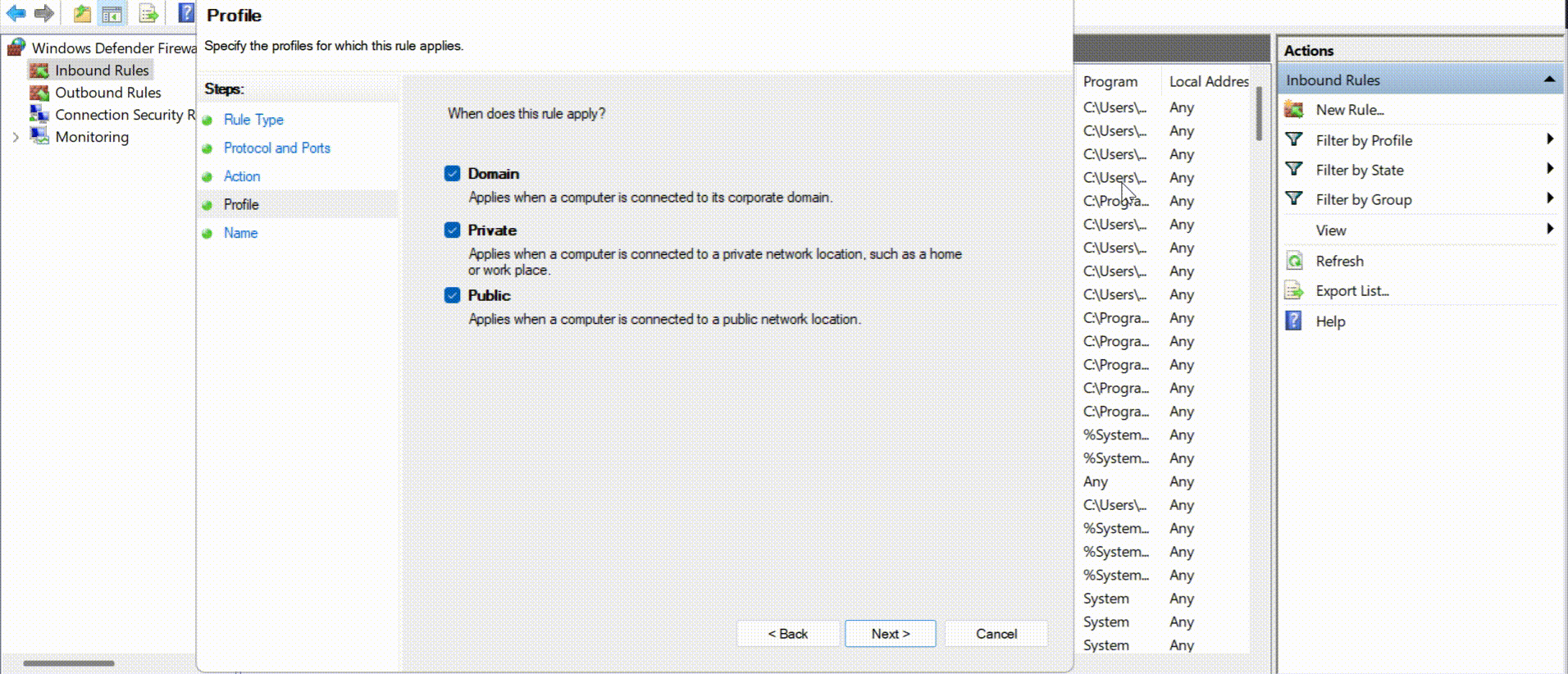
By following this tutorial, you understand how to Open ports in Windows 10 and 11. Please make sure to carefully double-check that you’ve followed each step. I have included some solutions for your common doubts and issues you face while you open a port in Windows along with some security practices below.
FAQs
-
I opened the firewall ports, but they’re still blocked. How can I fix this?
Verify the port number, protocol (TCP/UDP), and direction (Inbound/Outbound) of the rule you set up. For testing, temporarily disable your firewall to check if that fixes the issue. If it does, then the firewall rule is likely the problem. Carefully review the rule. Also, ensure that the application is set to use the correct port by checking its documentation. Lastly, look at the Windows Firewall logs for any blocked connections related to the application.
-
How do I check the Windows Firewall logs for Port Blocking?
Search for “Event Viewer” in the Windows search bar and go to the path: Event Viewer (Local) > Windows Logs > Security. Right-click on “Security” and click “Filter Current Log…” In the “Event sources” dropdown, select “Microsoft-Windows-Security-Auditing“. Here you can view the logs related to Port Blocking.
-
What are the different firewall profiles (Public, Private, Domain) and which one should I use?
Windows Firewall profiles control how open your ports are based on network trust.
Public: Use this for public Wi-Fi, like in cafes and hotels. It’s important to block as much as possible for security. Only open ports if necessary, and be aware that this carries a higher risk.
Private: This is for trusted home or work networks. It offers moderate security and allows some sharing. While you can open ports, remain cautious; it’s safer than public networks, but still requires vigilance.
Domain: This is meant for company networks managed by the IT department. Your organization determines the security level. Be sure to follow your company’s policies regarding usage.(Always use the Public profile on untrusted networks. Opening ports on Public networks significantly increases your risk. Only open ports if you’re certain it’s required and understand the potential consequences.)
-
How do I know which port number to open?
The application or game’s documentation, website, or support forums should specify the port numbers it requires. Some of the commonly used port numbers can be found from this knowledge base for your reference: Commonly used port numbers.
Sometimes, online searches for “[application name] port number” can also provide this information. -
How can I check which ports are currently open on my computer?
You can use the netstat command in the Command Prompt to view active network connections and listening ports. Open Command Prompt as administrator and type
netstat -anoto see the port numbers and the associated processes. -
I have a router. Do I need to open ports on my router as well?
Sometimes, yes. If your computer is behind a router, you might need to forward the same ports on your router to your computer’s local IP address. Consult your router’s documentation for instructions on how to do this. Sometimes, online searches for “[router model name] port forwarding” can also provide this information.
If you’re looking to get those ports opened up in Linux, you’re in luck! We’ve got a fantastic blog post that dives into all the details you need. Check it out: https://www.veeble.com/kb/how-to-open-a-specific-port-on-linux/
Fast and Secure Windows Hosting
Quick loading and secure Windows hosting with optimized IIS and free SSL. Benefit from our reliable infrastructure and 24/7 support.
Start Hosting














